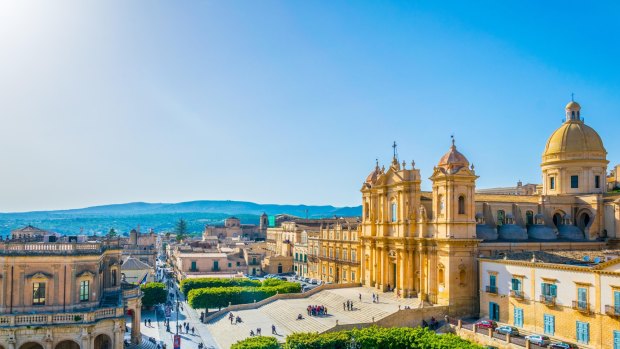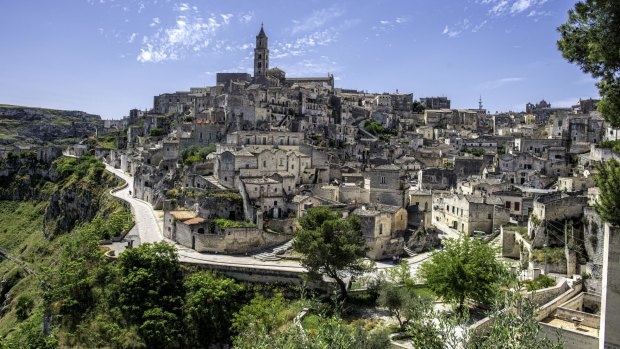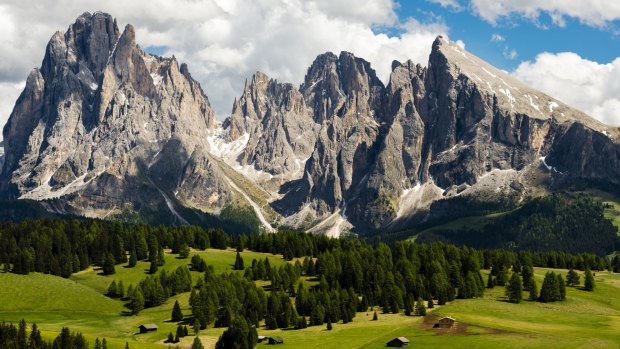This was published 2 years ago
Australia international borders: Why Italy will be the first country I visit

Noto, Sicily.Credit: iStock
Chocks away! Like thousands of other Australians I'm getting excited about venturing beyond my local council area. I'm planning my travels in 2022 and the first country I'll be visiting is Italy.
Per million of its population, Italy has fewer case numbers than France and Germany, just slightly more than Spain but six times less than the UK. Fewer infected people means less chance of you getting sick. According to the number crunchers at the Centre for the Mathematical Modelling of Infectious Diseases (CMMID) at the London School of Hygiene and Tropical Medicine, Italy's effective reproduction rate (R) is currently 0.92, which means COVID-19 is trending downward.
At September 21, 66 per cent of Italy's eligible population is fully vaccinated, with 74 per cent having received one shot. That's ahead of France, the UK and Germany although less than Spain and Portugal.

The UNESCO World Heritage-listed village of Matera.Credit: iStock
Strict COVID-19 protocols
Italy has instituted a green pass system, proving the holder has been vaccinated, has recovered from the virus or tested negative. A green pass is required to enter gyms, bars, restaurants, museums and railway stations, with a fine for non-compliance of up to €1000 ($1610).
From October 15 all workers will be required to have a green pass as a condition of their employment, even the self-employed. The requirement extends across all workplaces in all sectors. That's a tougher stance than any other European country, reflecting Italy's determination to stamp out COVID-19, and in particular the delta variant, the superbug responsible for the greatest number of infections. Waiters, shop assistants, bus drivers, guides, taxi drivers, hotel staff and everyone else you come into contact with who works for a living carries a low risk of catching or passing on an infection. These new requirements for all employees should spur Italy to have its population fully vaccinated before the end of 2021.

The Dolomites region.Credit: iStock
Reciprocal healthcare agreement
Australia and Italy have a reciprocal healthcare agreement. That means if you do fall sick or have an accident, some of your medical costs may be covered in the Italian public health system. The agreement covers care as a hospital patient or out-patient at public and authorised hospitals and specialist care from public clinics, health centres and authorised hospitals and clinics. It may not cover the cost of medications and tests. To qualify, you'll need to show your passport and Medicare card.
The rules for vaccinated Australians
For the purposes of entry during the pandemic, Australia sits on Italy's "List D", and the rules for those countries have recently been relaxed. Australians who are fully vaccinated and who have proof of a negative PCR or antigen swab test taken in the 72 hours prior to entering Italy are no longer required to undergo quarantine. The Australian government has promised the vaccine passport currently under development will be internationally recognised. If so, that should be sufficient to allow entry to restaurants, museums and all the other facilities in Italy that require a green pass.
Which regions are safest?
According to the New York Times, Sicily is recording more COVID-19 cases than other parts of Italy, currently running at 12 new daily cases per 100,000. That's not particularly high, and not enough to make Sicily a no-go area for me. Even the northern province of Lombardy, at the epicentre of infections when the pandemic first struck Italy, is now recording just five new infections per 100,000 daily.
It's particularly pleasing that Italy's cities are generally lower than the provinces. The figure for Rome is low, at six cases per 100,000 daily, and that's where I'll be starting off but in general I'll be avoiding cities.
Why Italy?
The Colosseum, St Mark's Square in Venice, the Ponte Vecchio in Florence, the ceiling of the Sistine Chapel, the cubist, sunburnt villages that rise from the sea along the Cinque Terre – they're some of the showstoppers, the things that draw us to Italy. For me there's another Italy. It's driving the coast road that snakes along the Amalfi coast south of Naples, a meal of strangozzi, a pasta made from semolina, served with local black truffles and olive oil from the groves that ring the Umbrian hilltown of Spello.
It's wandering open-mouthed among the baroque treasures of Noto in Sicily and the cave dwellings of Matera, a southern village that might have come from the Old Testament, and another meal of dumpling soup and sausages with buttery potato, eaten outside in a meadow in the Dolomites filled with wildflowers set within an amphitheatre of snow-covered mountains.
These are just some of the memories from 30-plus years of Italian wanderings, and I'm planning to add some more. Including a major birthday celebration in mid-2022 in a villa in Sicily. Wine, great food, sunshine, family – and in Italy, you can't go wrong.
Sign up for the Traveller Deals newsletter
Get exclusive travel deals delivered straight to your inbox. Sign up now.